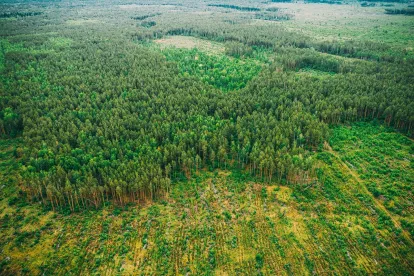On the heels of the November 2021 Tribal Nations Summit, a flurry of memoranda were signed by the White House and many government agencies. These memoranda seek to further the Biden administration’s promises of consulting with indigenous people and acknowledging their communities’ cultures, customs, sacred sites, and historical knowledge in the contexts of environmental planning, sustainability, and justice, and in ongoing and forthcoming federal decision making and regulatory rulemaking.
Center stage in the ongoing discussion is Indigenous Traditional Ecological Knowledge (ITEK), and the need for including and consulting with Tribal communities on the front end of planning as part of the environmental review process under the National Environmental Policy Act (NEPA)—something that inconsistently occurred in the past. Stakeholders from developers and investors to Tribes and regulators, among other parties, should expect increased focus and guidance from the Biden administration in 2022 on these issues. The additional focus on these issues will present opportunities, but also challenges, as it adds another step in the already time-consuming NEPA process.
The timing of these initiatives also coincides with an expected increase in environmental reviews as infrastructure projects under the Infrastructure Investment and Jobs Act (IIJA)—which includes at least $13 billion for Native communities to improve roads, expand broadband access, and fund sanitation, water rights, and environmental reclamation projects—enter into the planning and construction stages. Just this week, the Department of the Interior (DOI) announced that the White House Council on Native American Affairs will convene an engagement session with Tribal leaders at the end of this month focused on implementation of the IIJA.
As proponents of infrastructure and other major projects look to permitting and project development in 2022, they should consider engaging early with Tribal communities and relevant agencies to ensure robust consultation and incorporation of ITEK throughout the NEPA process. They should also track and ensure compliance with forthcoming ITEK guidance from the federal government that is expected later this year, as well as other agency directives and memoranda of understanding (MOUs) related to Tribal consultation and incorporation of ITEK.
Momentum Building
Since “Week One” in the White House, the Biden administration has consistently committed itself to working with Tribal communities through various mechanisms, including the Memorandum on Tribal Consultation and Strengthening Nation-to-Nation Relationships (January 26, 2021); Executive Order (E.O.) 13,985: Advancing Racial Equity and Support for Underserved Communities Through the Federal Government (January 20, 2021); and E.O. 14,031: Advancing Equity, Justice, and Opportunity for Asian Americans, Native Hawaiians, and Pacific Islanders (May 28, 2021).
Tribal communities laud the Biden administration for its focus on ITEK and their customs, cultures, beliefs, sacred sites, and environmental stewardship and justice. While federal agencies have sought guidance on consulting with Tribes on ITEK issues in the past, many observers have deemed the efforts inconsistent, or derided them as merely greenwashing. However, changes are coming, and momentum is building, given the three significant memoranda from November that illustrate the administration’s commitment to Tribes and the environment, and the promise for more guidance this year.
Released by the White House Council on Environmental Quality (CEQ) and the White House Office of Science Technology Policy (OSTP), the memorandum recognizes ITEK as critical to federal government decision makers and commits to additional consultation with Tribal communities. It states:
“ITEK is a body of observations, oral and written knowledge, practices, and beliefs that promote environmental sustainability and the responsible stewardship of natural resources through relationships between humans and environmental systems. It is applied to phenomena across biological, physical, cultural and spiritual systems. ITEK has evolved over millennia, continues to evolve, and includes insights based on evidence acquired through direct contact with the environment and long-term experiences, as well as extensive observations, lessons, and skills passed from generation to generation.”
The memorandum also states that, where appropriate, ITEK should inform federal decision making. Further, the memorandum calls for the creation of the Interagency Working Group on Indigenous Traditional Ecological Knowledge to develop ITEK guidance for the federal government and promote ITEK “as one of the many important bodies of knowledge that contributes to the scientific, technical, social, and economic advancements of the United States and to our collective understanding of the natural world.” The working group will release guidance on ITEK in 2022 that will seek to ensure “that Federal agencies conduct regular, meaningful, and robust consultation with Tribal officials in the development of federal research, policies, and decisions, especially decisions that may affect Tribal Nations and the people they represent” and will provide best practices for collaboration with Tribal Nations around ITEK application. Given the Fourth National Climate Assessment mentioned ITEK as key to reducing emissions and the impacts of climate change, as reiterated in the memorandum, it is likely climate change will be discussed in the guidance. The memorandum ends with an appendix of past ITEK successes between Tribes and the federal government.
This memorandum serves as an initial step in a process to develop guidance out of the working group that will be shaped by input from the Tribal Nations, ITEK holders and practitioners, agency experts, and the public, and stakeholders and project proponents should be prepared to participate in this process in 2022.
Signed by the DOI, Department of Agriculture (USDA), Department of Transportation (DOT), Department of Energy (DOE), Environmental Protection Agency (EPA), CEQ, Advisory Council on Historic Preservation (ACHP), and Tennessee Valley Authority (TVA), the MOU seeks “to affirm [the participating agencies’] commitment to improve the protection of, and access to, Indigenous sacred sites through enhanced and improved interdepartmental coordination, collaboration, and action” with regard to agency decision making and regulatory processes. A patchwork of statutes and executive orders are listed as key in the implementation of the MOU, and include the National Historic Preservation Act (NHPA), NEPA, Native American Graves Protection and Repatriation Act (NAGPRA), E.O. 13007: Indian Sacred Sites, Archaeological Resources Protection Act, American Indian Religious Freedom Act, Religious Freedom Restoration Act, and E.O. 13175: Consultation and Coordination with Indian Tribal Governments. The MOU also contains 12 actions, including the creation of an interagency working group; the acknowledgement and incorporation of ITEK into the “best practices procedures and guidance for the management, treatment, and protection of sacred sites”; and a call for a listening session within 120 days of the execution of the MOU between the White House Council on Native American Affairs, Tribes, Native Hawaiian organizations, and participating agencies on the MOU and its implementation. Coming from the listening session and consultations, each agency is to develop and implement mutually agreed upon actions and amend the MOU, as appropriate.
Signed by the ACHP, USDA, Department of Commerce, Department of Defense, Department of Education, DOE, Department of Homeland Security, Department of Housing and Urban Development, DOI, Department of Justice, Department of Labor, Department of State, DOT, Department of Veteran Affairs, EPA, Office of Personnel Management, and CEQ, the MOU affirms the agencies’ “commitment to protect[ing] treaty rights, reserved rights, and similar tribal rights to natural and cultural resources.” It builds upon a previous 2016 MOU. The agencies further express their intent to demonstrate their commitments by considering treaty and reserved rights early in agency decision making and regulatory processes. Further, the agencies commit to supporting the creation of a database of all treaties between the United States and Tribal Nations to ensure compliance with treaty obligations in decision making and regulatory processes. The MOU also establishes a working group comprised of members from each participating agency that, among other things, will meet monthly, include a sub-group of agency attorneys to provide legal support, and generate certain reports to the White House Council on Native American Affairs.
Concerns Mounting
Despite the Biden administration’s effort to embrace ITEK, respect sacred sites, honor treaties, combat climate change, promote environmental justice, and seek ongoing and consistent consultations with Tribal communities in the NEPA process, skeptics on all sides of the discussion have concerns including:
-
Additional, new “red tape” in the NEPA process. Will the already cumbersome environmental review process under NEPA be held up by months or even years as a result of additional discussions with Tribal communities?
-
Infrastructure Investment and Jobs Act. With more than a trillion dollars committed to infrastructure, and specific funds set aside for Tribal communities, will these efforts create additional process requirements that slow down development of these projects? In addition, it remains to be seen how Tribal communities will respond to DOI’s request of them to provide input and feedback on early planning decisions for programs in the IIJA. Those programs include: Tribal Climate Resilience programs; water infrastructure and drought resilience programs; Indian water right settlement investments; wildfire resilience programs; ecosystem restoration programs; legacy pollution programs; and U.S. Geological Survey infrastructure law programs. And how will the Biden administration prioritize these projects?
-
Utilization and incorporation of ITEK. Tribal members remain unsure whether any knowledge provided will truly be utilized and incorporated into agency decision making and regulatory processes. They also may question whether providing ITEK in federal agency decision making and regulatory processes will benefit them.
-
Environmental justice. Some parties have questioned whether all the MOUs and EOs around ITEK are actually respecting and honoring Tribes and their sacred sites and treaties or whether they are merely paying lip service to these issues without meaningful changes in practices.
-
Mitigation of litigation risk or a new vehicle for challenge? Some believe upfront consultations will mitigate litigation risk on the back end, thus improving the timeline for projects on or adjacent to Tribal communities. However, these initiatives could provide another hook for challenging agency decision-making.
-
Consistency across agencies. Given the size of the United States, the number of agencies, and the variety of projects, there are apt to be inconsistencies in the rollout and implementation of these directives. It remains to be seen how effective the working groups will be in their coordination objectives.
-
Focus on certain industries. Will certain industries, such as the fossil fuel industry, be the main focus of efforts related to Tribal consultations and directives related to incorporation of ITEK?
Changes Abounding
While there is widespread agreement that respecting our Tribal communities is important, there are varying stakeholders vying for a voice related to these MOUs and, more generally, project permitting within Tribal communities. Without a doubt, more clarity on ITEK and the federal government’s engagement with Tribes is coming via the aforementioned working groups, listening sessions, and 2022 guidance document. However, one should expect additional executive orders, MOUs and statutes on these issues, especially ITEK, which will embed itself in other issues, including climate change, in the months and years ahead. As always, regulatory rulemakings and changes call for pivoting at a moment’s notice for all stakeholders, making it wise to have a predefined strategy and effective counsel to help navigate these changes as they occur.
In the future, proponents of projects on federal lands, or proponents needing federal approvals, will want to begin considering these issues early in the planning process. While certain strategies to address these issues can be developed and included now, expect 2022 to deliver greater focus and guidance on how these strategies can be incorporated into existing planning processes. Accordingly, stakeholders will want to continue to monitor developments in this area as they emerge, and consider participating in the public comment opportunities around them.






 />i
/>i
